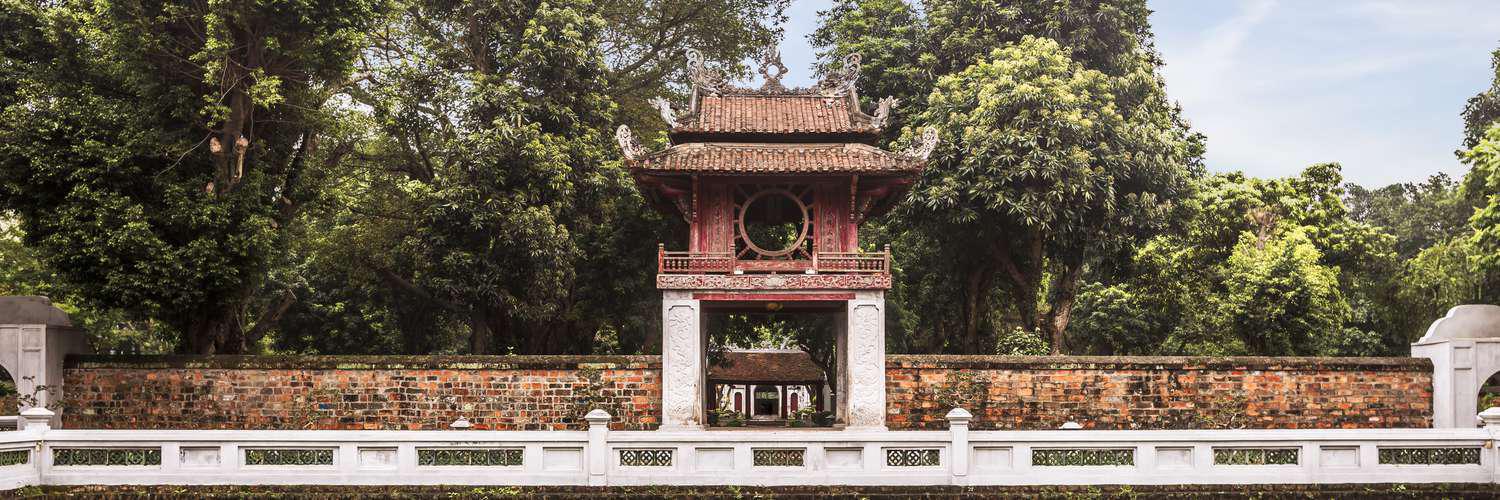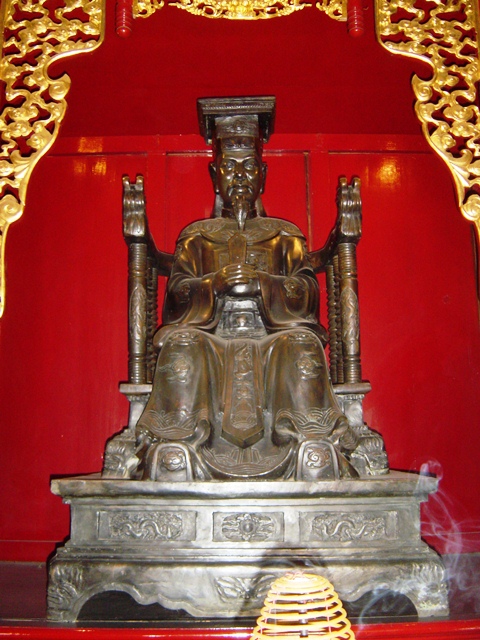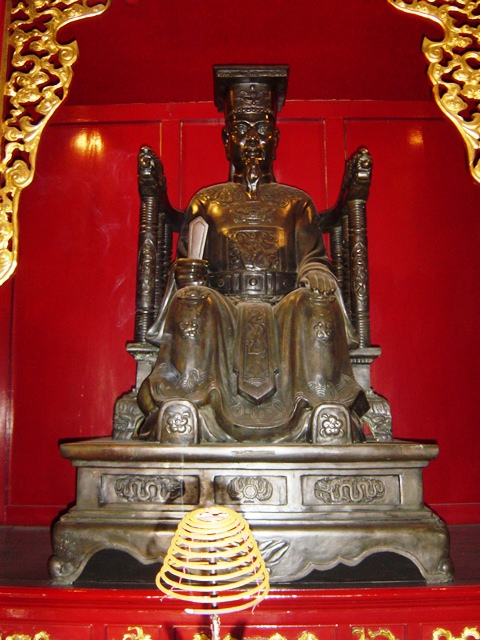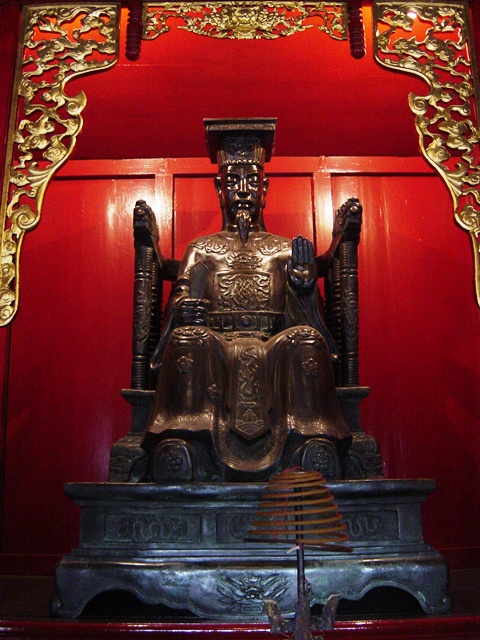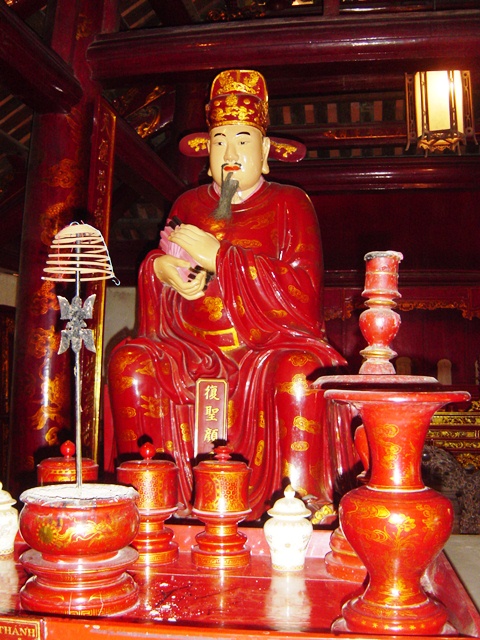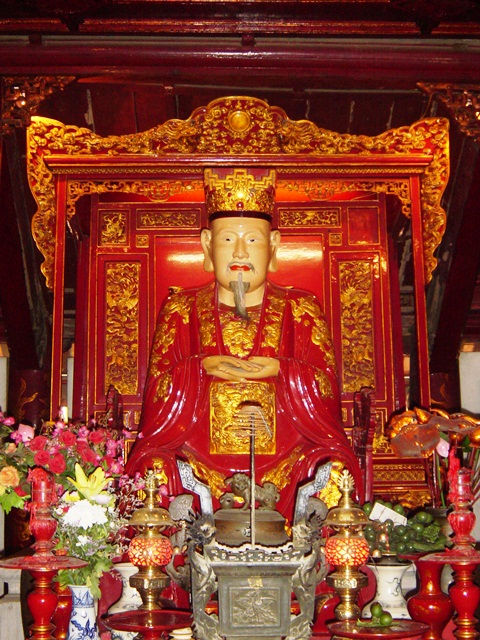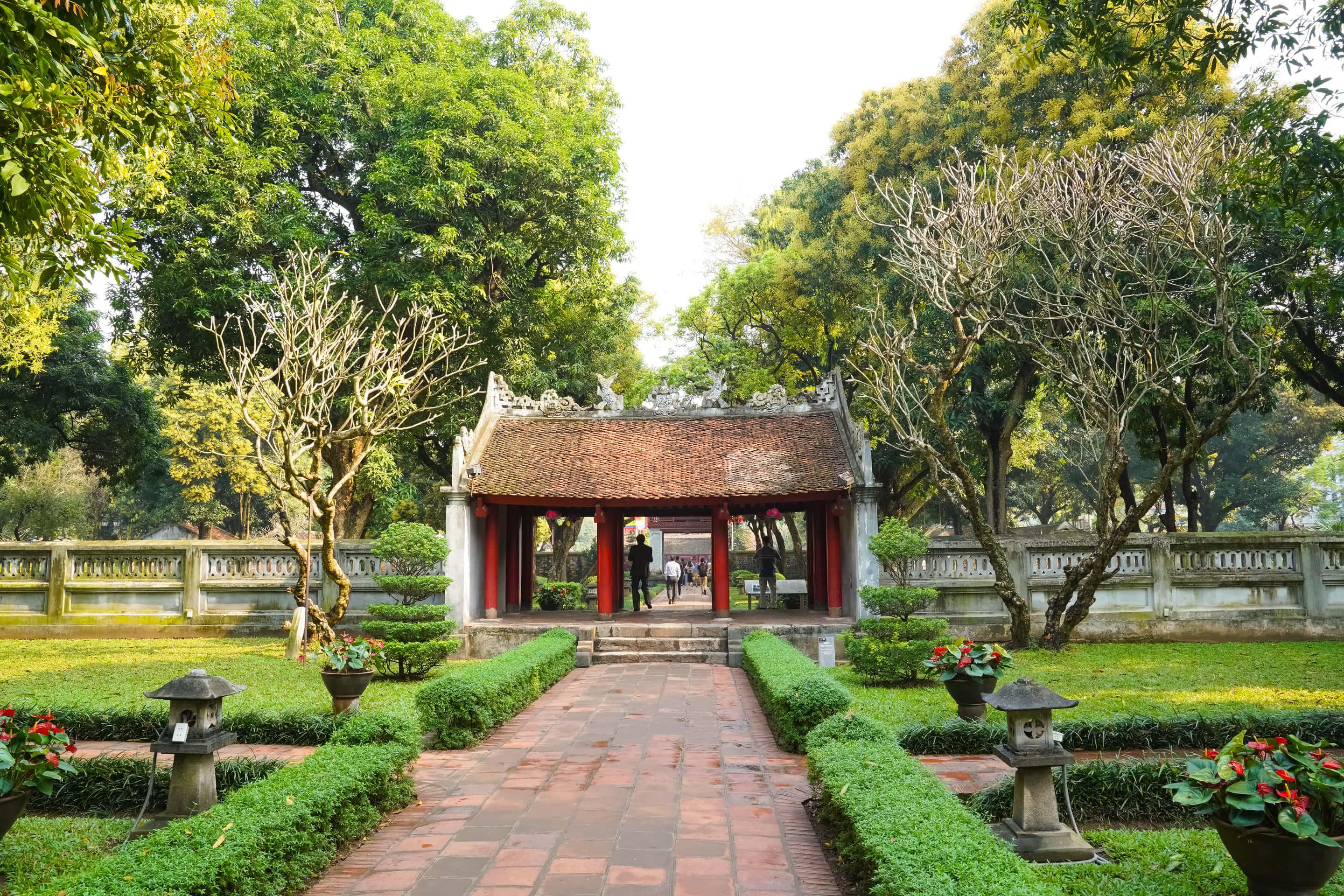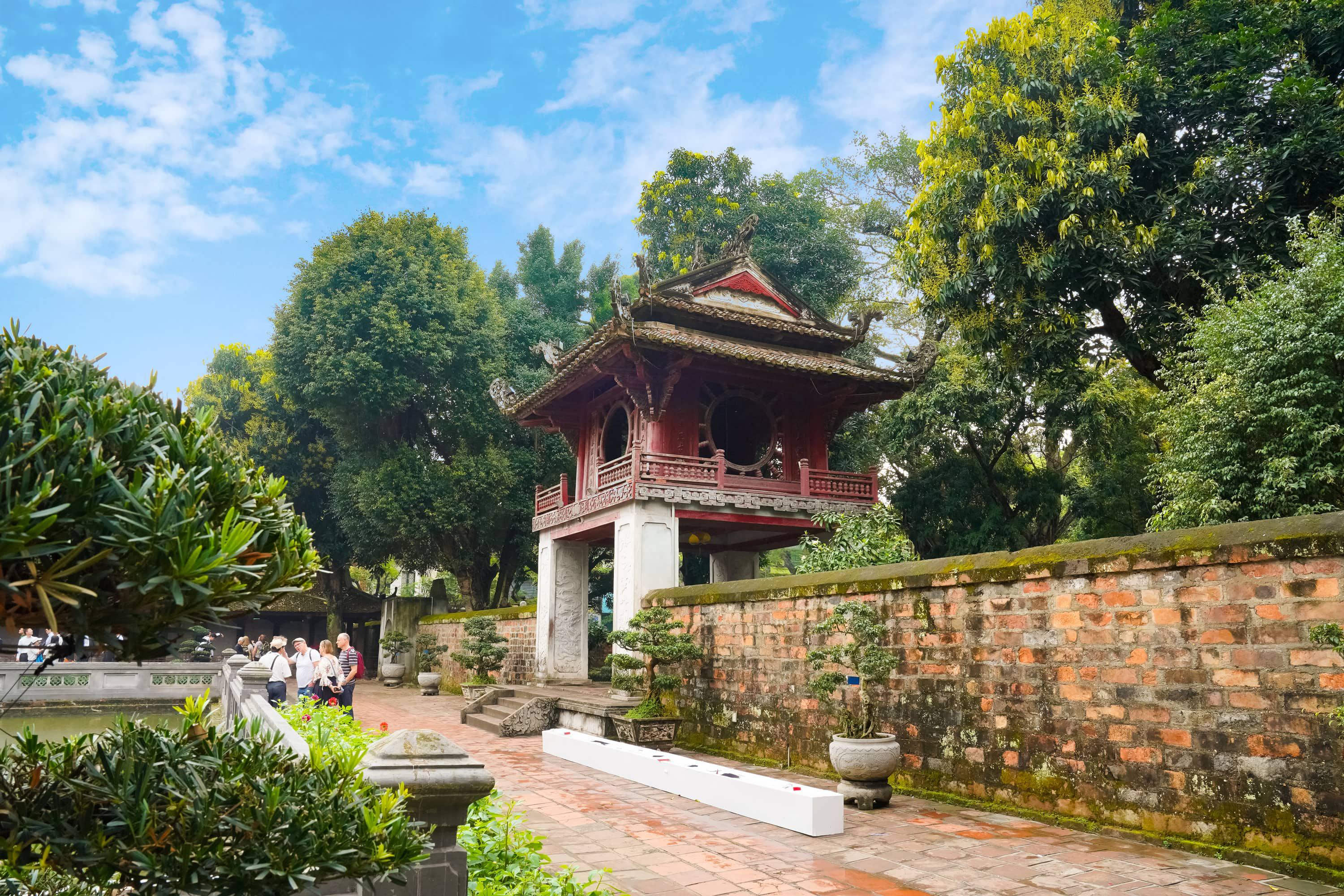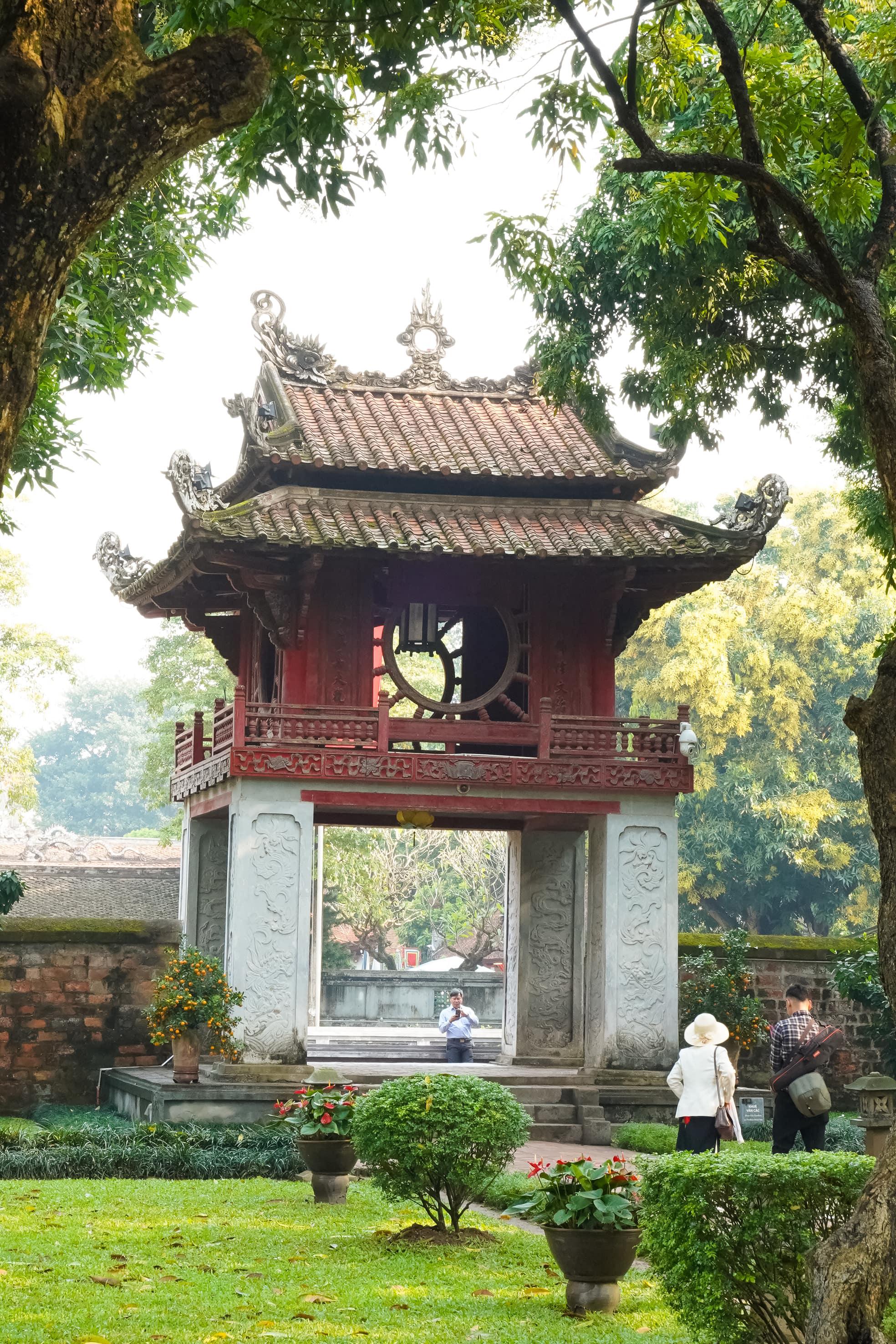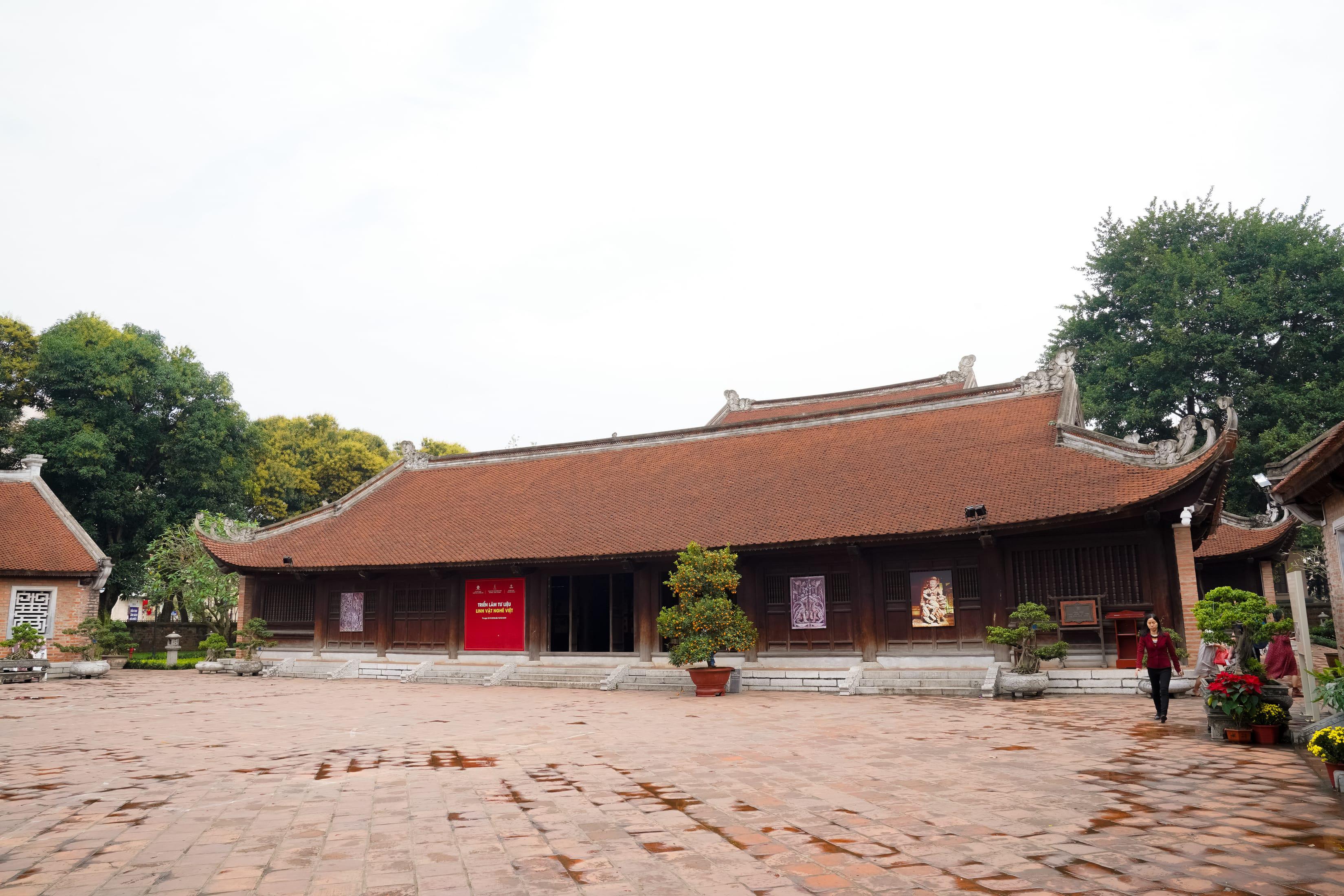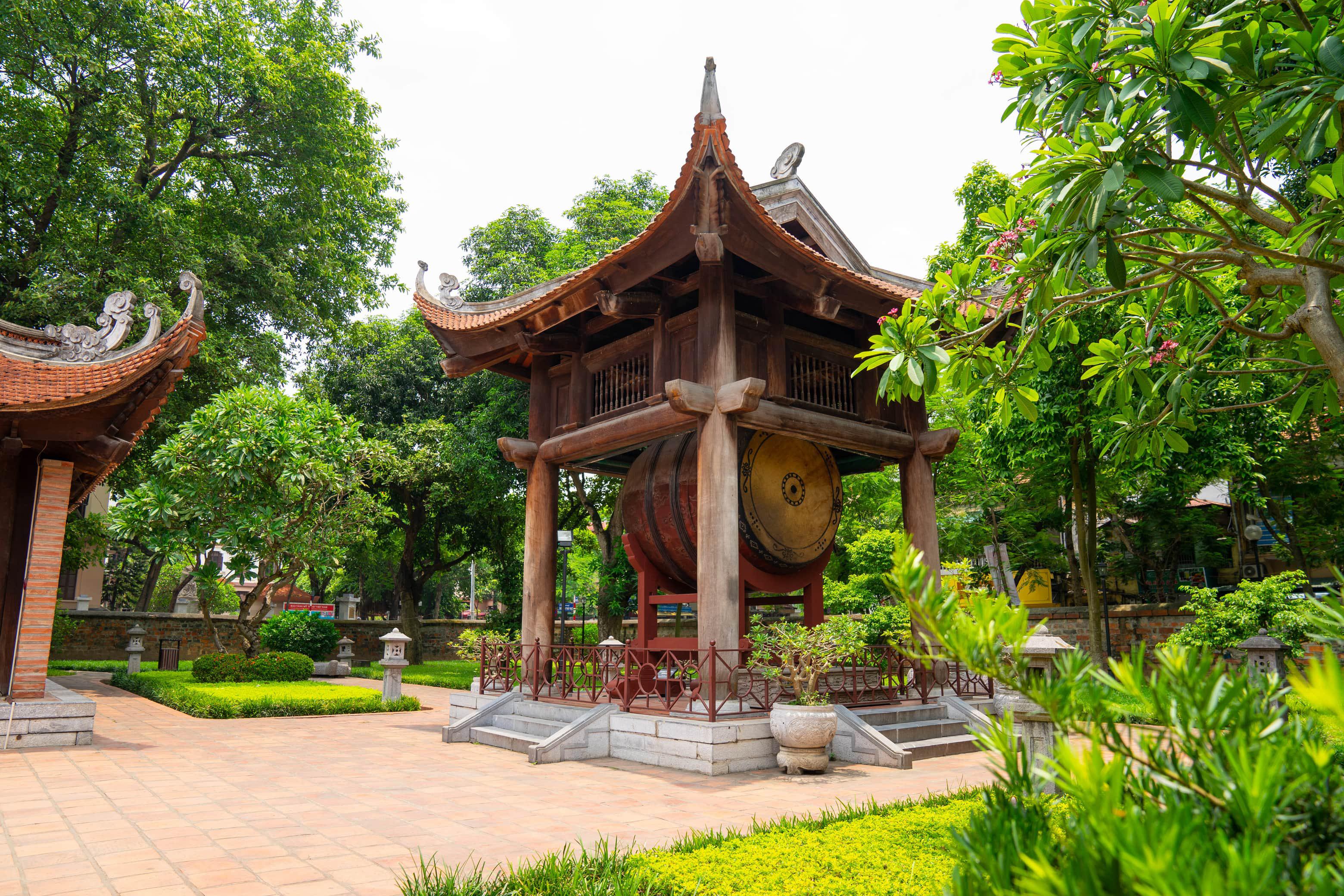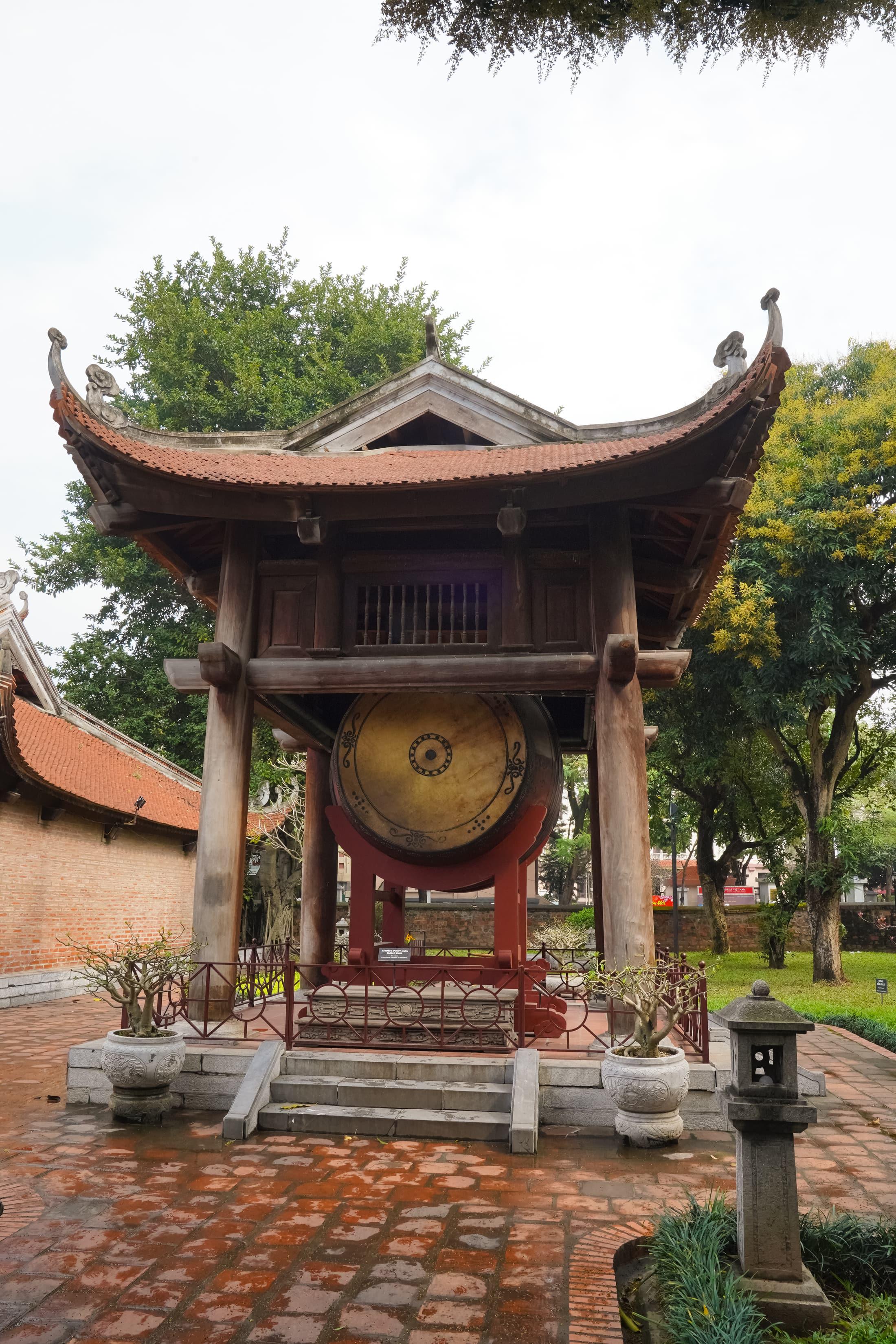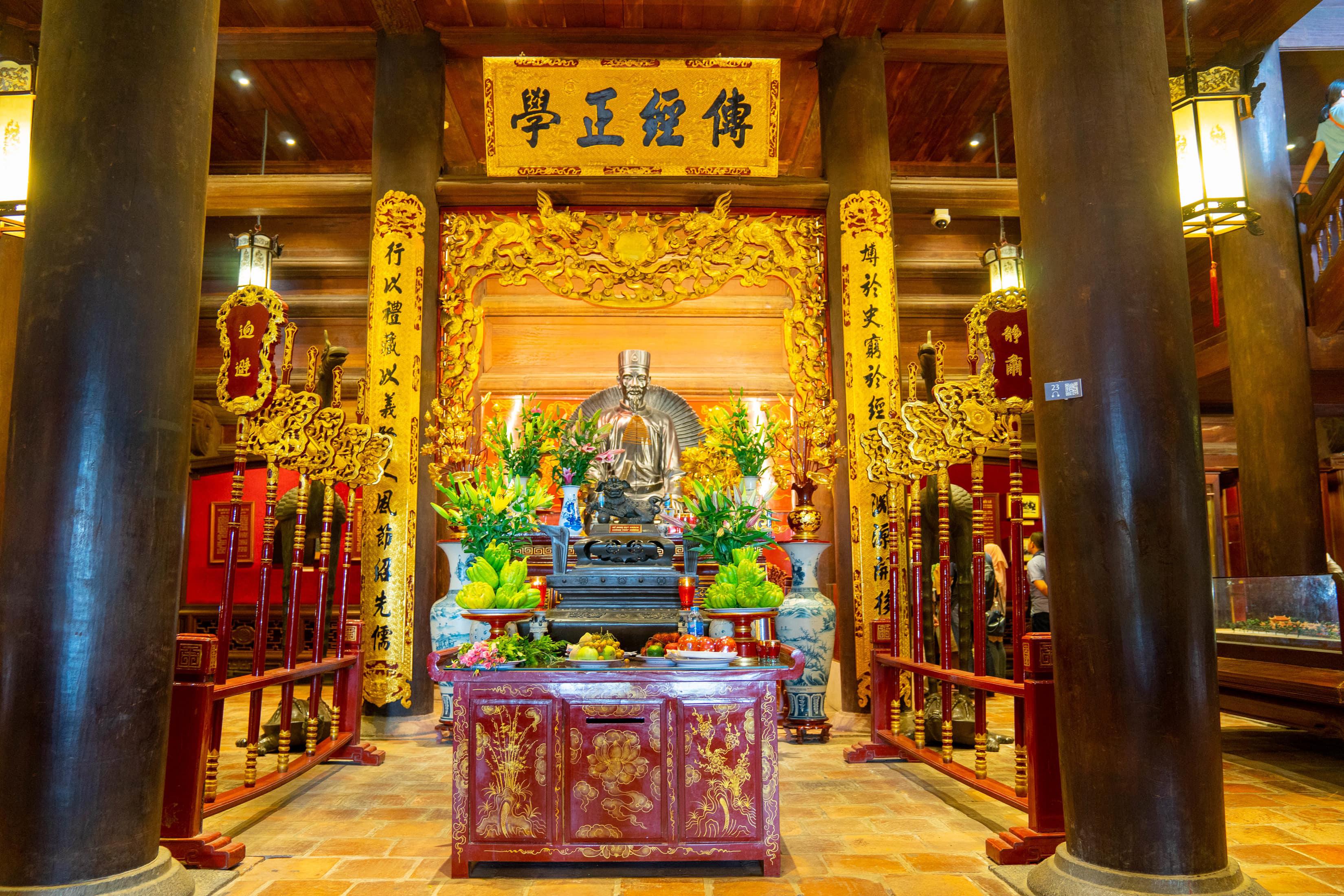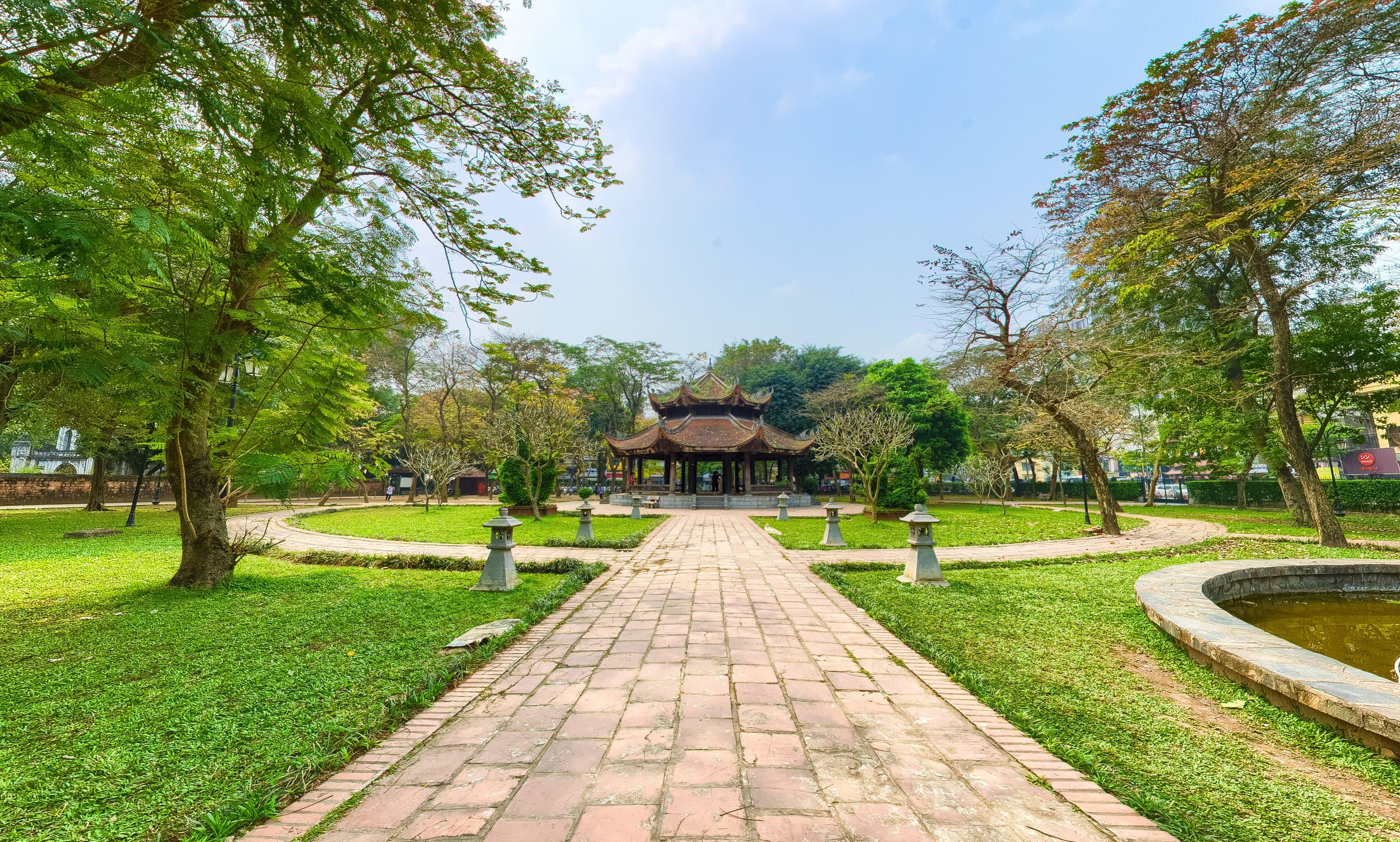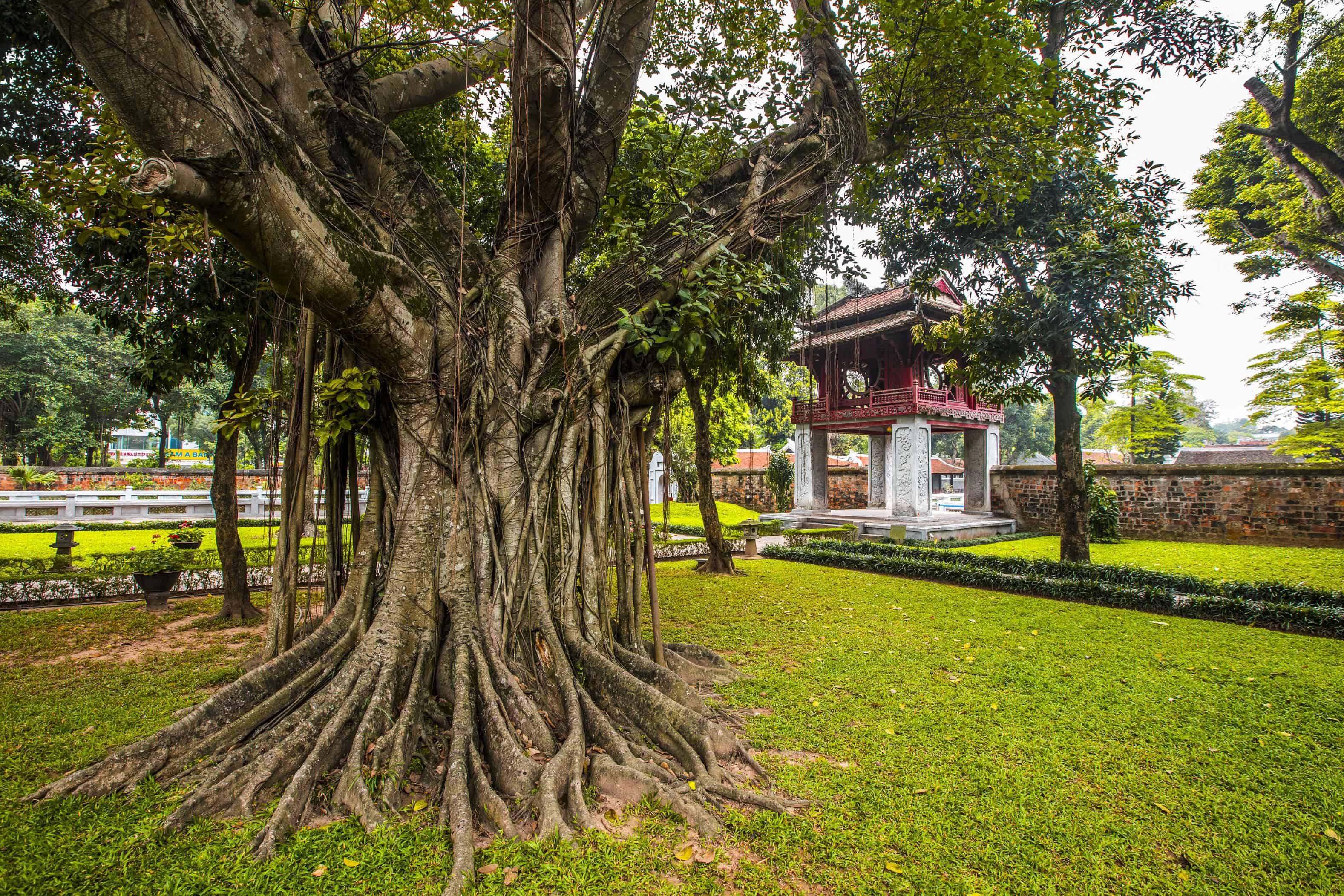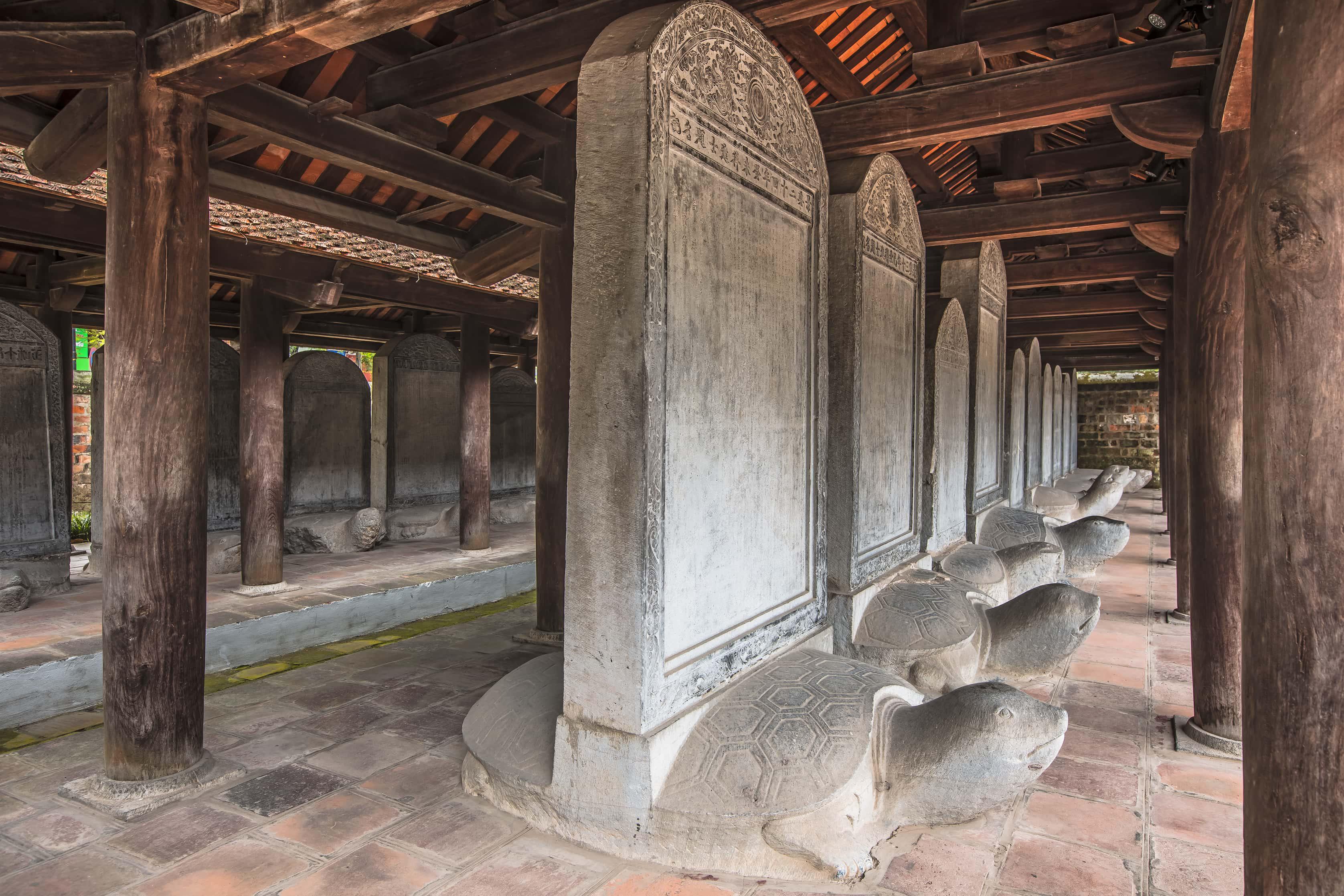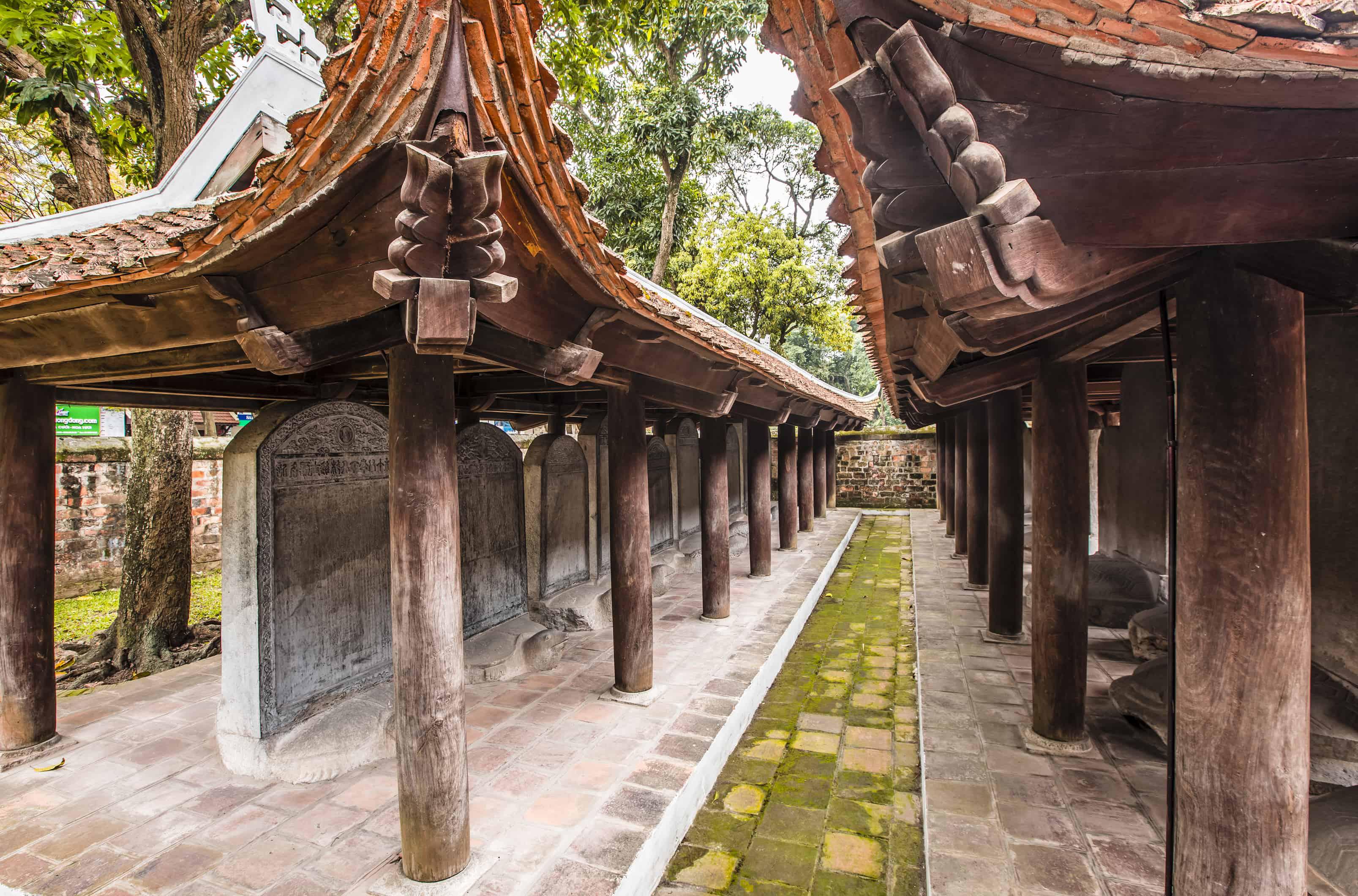KING LÊ THÁNH TÔNG – THE KING PAID ATTENTION TO EDUCATION AND PROMOTED TALENT
His given name was Hao, his pen-name was Tu Thanh. He was the fourth son of King Le Thai Tong. He was the king for 37 years (1460-1497). He was a clear-sighted, decisive king; he was both a talented scholar and a warrior. He was fond of reading books.

Under the reign of King Lê Thánh Tông, the Hương (Provincial), Hội (National0, and Đình(Royal) exams were clearly defined and strictly enforced. In 1462, he decided to host the Huong exam, once every three years to select talents from the local level, in order to select the best candidates. The Hương examination consisted of 4 rounds: The first round asked about the content of Confucian classics; The second round required candidates to write administrative documents such as King’s edicts, proclamations, petitions, letters to the Kings; The third round asked candidates to compose poems and odes; The fourth round required them to write essays. If the candidates were able to pass a round they were qualified to sit for the next round.
From the exam in 1466, the king Lê Thánh Tông prescribed the contest every three years. The king appointed officials with profound education, and the integrity to hold important positions as examiners for those exams. The procedure and content of Hội examinations were the same as those of the Huong examination, but at a higher level.
The Đình examination was organized at the royal court. Candidates were asked to write an essay on a topic given by the King about the methods of governing the State, the use of talented men, etc. The Đình examination was for high-low ranking by the king. During his reign, Emperor Lê Thánh Tông organized 12 Royal exams, and 502 doctoral luareates passed, more than any other dynasty.
In addition, King Lê Thánh Tông also took care of training and invested in educational facilities. In 1467, the king ordered training in the Doctors of Five Classics. Each one specialized in studying one classic to teach the students. This was the first time in the history of education that the teachers specialized in teaching Five Classics, besides the other teachers of Quốc Tử Giám.
In 1483 King Lê Thánh Tông ordered Văn Miếu – Quốc Tử Giám to be completely restored. Quốc Tử Giám - Thái Học Viện was built on a large scale. It consisted of the Minh Luân (enlightened way) house where comments on poems and literature was made for Giám sinh and students, the East and West wings – the Giám sinh classrooms, a warehouse for wooden printing blocks of textsbooks and Confucian Canons as well; on the West and East sides were Tam xá (three rows of houses), each comprising 25 rooms, each room used for two students to live. Under King Lê Thánh Tông, Giám sinh were chosen carefully: those who had passed three of the four rounds of the Hội examination were selected as Giám sinh of upper rank (thượng xá sinh), who had passed 2 rounds were to the medium rank (Trung xá sinh) and lower rank (hạ xá sinh) comprised those who had passed one round. Each rank comprises of 100 students and later the recruitment of those students depended on these ranks.
In 1484, King Lê Thánh Tông ordered the erection of the stone stele recording names and homelands of doctor laureates of examinations at Văn Miếu – Quốc Tử Giám in order to honor talents and encourage studying.
In addition to having their names engraved on the stele, the new doctoral laureates also attended the naming ceremony, had their names were written on a golden board, were given a banquet by the king, offered clothes, hats and belts, and given horses to go home to pay respect to ancestors. Lê Thánh Tông's treatment and respect for talents and sages was a great encouragement for the scholars of the country.
LH
LÝ NHÂN TÔNG KING - A TALENTED MUSIC COMPOSER
The King being well-known generation by generation with his great contributions to a nation was clear-sighted and both scholar and warrior. Lý Nhân Tông King (1066-1128) who organized the first examination in Vietnam in 1075 and established Quốc Tử Giám in 1076
However, few people know this king being a talented music composer. His various musical works made music of Đại Việt more brilliant, found the ancient court ritual music of Vietnam then.
Lý Nhân Tông King was intelligent understanding Buddhism, Confucianism, Taoism profoundly and artistic skills. Especially, the king was excellent at prosody to compose songs for instrumentalist. Nowadays, there is a stone stele engraved in 1121 at Long Đại Sơn pagoda in Hà Nam province with inscription recording the details of interesting stories of artistic life of Lý nhân Tông King. This was a precious historical resources for the next generation to understand a King's fascination with music.

The statue of King Lý Nhân Tông (1066-1128) at Thái Học house of Văn Miếu – Quốc Tử Giám
Lý Nhân Tông King was fond of music, got many chances to enjoy music when he was a child. He also wrote poetry beautifully with his good hand - writing.
The King was a connoisseur of oversea music (Chiêm Thành, China, India) translating songs into Vietnamese, composing s plenty of new songs for instrumentalists.
King's substance of musical works fascinating people which compared with special things from paradise.

A stone stele engraved in 1121 at Long Đại Sơn pagoda in Hà Nam province with inscription recording the details of interesting stories of artistic life of Lý nhân Tông King.
Lý Nhân Tông King also loved to open festivals to glorify the merit of Buddha Sansana as well as bringing happiness to people. Regatta festival and lantern festival and water puppet performance opened every year.
Lý Nhân Tông King' s contributions made culture and art of Đại Việt more brilliant. Moreover, it could be said that songs, dance, piece of music composed by Lý Nhân Tông King over 900 years ago finding the ancient court ritual music of Vietnam then.
Translator: BP
STATUE OF TEACHER CHU VAN AN AT THAI HOC COURTYARD
In the middle of the rear building of the Thai Hoc courtyard of the special national landmark Van Mieu - Quoc Tu Giam, there is a statue of Chu Van An – The Headmaster of Quoc Tu Giam. The statue is 2m3 high, weighing about 3 tons cast by the artisans of the famous bronze casting village Ngu Xa in 2003.

Chu Van An (1292 – 1370), was given the name Linh Triet at birth, and his pen name was Tieu An. It was said that Chu Văn An was awarded the title Thái Học Sinh (doctor degree) under the Trần dynasty. However, he did not work as a mandarin, instead he founded a private school to train many talents for the nation. King Tran Minh Tong (1314-1329) invited him to the Capital to instruct Crown Prince Tran Vuong (who later became King Tran Hien Tong ) and appointed him as Principal of Quoc Tu Giam. On November 26, Canh Tuat year (1370), he passed away in Phuong Hoang mountain and continues to be worshiped in Van Mieu.

The Thai Hoc courtyard was built in 2000 as part of the 990th anniversary of Thang Long - Hanoi. In 2003, the statue of teacher Chu Van An was made and placed in Thai Hoc courtyard in order to pay respect to Chu Van An. Sculptor Le Quoc Bao was the artist of the statue. The artist carefully studied Mr. Chu Van An. He devoted himself to completing the statue portraying the personality, charisma and style of teacher Chu Van An. The statue has the look of a person about 60 years old, wearing a Dinh hat, and there is a jewel of sage on the hat. He was a mandarin, so his face looks chiseled with an elegant thin beard. His eye brows are frowning because of concerning about the nation. His forehead is tall and wide in the shape of a face-up liver representing a strong intuitionist. The nose of the sage is wise. The ears are evenly placed, the ear lobes are thick, the ear rim is clearly representative of the gentleman. The back of the chair is carved with a cosmic tree.
The life and career of the Principal Quoc Tu Giam Chu Van An has greatly influenced many generations. Today, he has become a symbol of a teacher with profound knowledge and bright morality. He spent all his time teaching literacy, people, and Vietnamese generations continue to respect and admire him.
Translator: LH
KING LE THANH TONG (1442 - 1497)
His given name was Hao, his pen-name was Tu Thanh. He was the fourth son of King Le Thai Tong. He was the king for 37 years (1460-1497), and gave 2 titles to his reign: Quang Thuan and Hong Đuc. He was a clear-sighted, decisive king; he was both talented scholar and a warrior.
Under his rule, Đai Viet country was independent, united and powerful; the culture and education highly developed. He was a great reformer: reformed government structure, gave prominence to jurisdiction, promulgated the Hong Đuc law, and ordered the making of the map Hong Đuc - the first map of Đai Viet country. He ordered to reconstruct Van Mieu and enlarge Quoc Tu Giam in 1843 into the spacious architecture complex, developed Confucian education and examination, ordered the National examination held every three years and made it as fixed convention. He also was the king who ordered to erect the first doctor stelae in Van Mieu to honour the talent and encourage students to learn Confucianism in order to have their names recorded in the golden board in Thai Hoc house.
Le Thanh Tong was a poet, he founded the Tao Đan society, vindicated Nguyen Trai and collected his remains. He also ordered to revise many great historic works such as: Đại Việt complete history, Thien Nam Du Ha tap…
KING LY NHAN TONG (1066 - 1128)
His given name was Can Đuc. He was the first son of King Ly Thanh Tong and Queen Y Lan.
At the age of seven he became a king and ruled for the next 56 years (1072 – 1128). He was a brilliant, humanitarian, knowledgeable king, he was also good at music, composition, and military. He succeeded in defeating enemies from the north and the south. He concerned about farm work, forbade the killing of cows and buffalos, so he was supported by all mandarins and people with all their heart.
In 1075 he held the Minh Kinh Bác Học exam, which was the first exam in Vietnam history. In 1076 he ordered the building of Quoc Tu Giam (the first National University) setting up the foundation for development of Confucianism in Vietnam, making great contributions to the construction of national culture.
KING LY THANH TONG (1023 - 1072)
King Ly Thanh Tong was a native of Co Phap district, which now belongs to Đinh Bang commune, Tien Son district, Bac Ninh province. His forbidden name was Nhat Ton and the eldest prince of King Ly Thai Tong. In 1028 he became Đong Cung Crown Prince. When King Ly Thai Tong passed away he took the throne and his reign lasted 18 years (1054-1072).
He was a wise and charitable king, set forth wise directions to build a powerful country such as decreasing punishments, attaching much importance to farming, developing education, consolidating and strengthening the national defense from the north to the south.
In 1070 he ordered the erection of the Temple of Literature to worship Confucius, sages, Confucian scholars. The Crown Prince Ly Can Đuc studied here.
CHU VAN AN
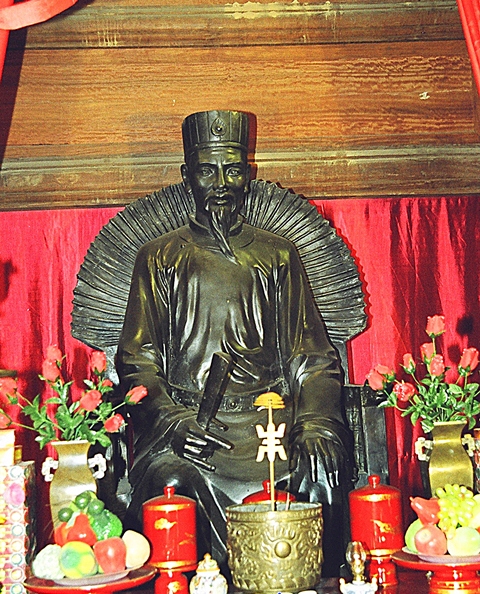
Chu Van An was born in 1292 in Thinh Liet commune, Thanh Đam district, which now belongs to Thanh Tri, Ha Noi. It was said that Chu Van An was awarded the title Thai Hoc Sinh (doctor degree) under the Tran dynasty. However, he did not work as a mandarin, but he founded a private school to train many talents for the nation, included Pham Su Mạnh, Le Quat who worked at the court as Nhap Noi Hanh Khien (chief mandarin) under Tran dynasty. His students always paid respect to him because he was full of integrity, unrighteousness. His students, who were even a minister or prime-minister, treated him as teacher, and those who were invited in usually knelt to listen to him. Those who were not good mandarins would be driven away.
Tran Minh Tong King (1314-1329) invited him to the Capital to instruct Tran Vuong crown prince (who later became the Tran Hien Tong King) and appointed him as Tu nghiep of Quoc Tu Giam, looking after the training in Quoc Tu Giam and ceremony in Van Mieu. Chu Van An wrote Tứ Thư Thuyet Ước as the textbook for students.
During the Tran Du Tong King (1341-1369) the court affaire was not good, mandarins abused their power. Even being as a teacher of Quoc Tu Giam, Chu Van An still worried about country, so he submitted a petition requiring to kill 7 bad madarins. Pity, the King did not reply his petition. Then he resigned and came to live in seclusion in Kiet Đac hill of Chi Linh district, Hai Dương province. In 1370, he died in age of 79. Tran Nghe Tong was so upset, gave him posthumous name as Khang tiet, awarded him the title Van Trinh Cong and ordered to honour him in Van Mieu. Chu Van An is the first Vietnamese Confucian scholar to be worshiped in Van Mieu. Vietnamese scholars all honoured him as the venerated educator. Chu Van An is not only the teacher of crown prince, but also the outstanding educator who made great contribution in the Nation education and was worshipped in many places of the country. That is why in 2003, the Vietnam government decided to cast bronze statue to honour him here.
Mencius (372-289 BC)
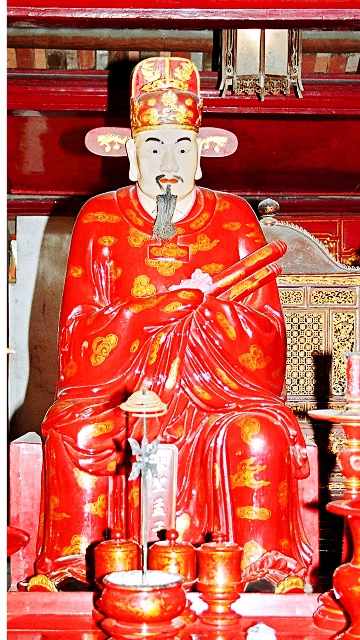
Mencius (372-289 BC), alias Zidi , is also called Menzi, a native of Zuyi of Lu State, a student of Zisi. His father died when he was still very young, his mother’s surname was Kiu. She, also called as Manh Mau (Mother Men) was welknown with the history of three time movings house to teach her son to good. Mencius traveled from state to state preaching the theory of Goodness, taking kindeness and righteousness as the standards to differentiate the Royal way and dictatorial way in the ruler’s way of governance, dignifying social codes of virtue. He gave high prominence to the idea “the mass is respectful”, comdemned the war, the draconian governance, advocated the way of good governance. Manh Tu – the book mainly recording his forceful speech made strong influence in spreading the Confucius’s theory. The later Confucian scholars honoured him as A Thanh (The second Saint)
Kungkap (483-401 BC)
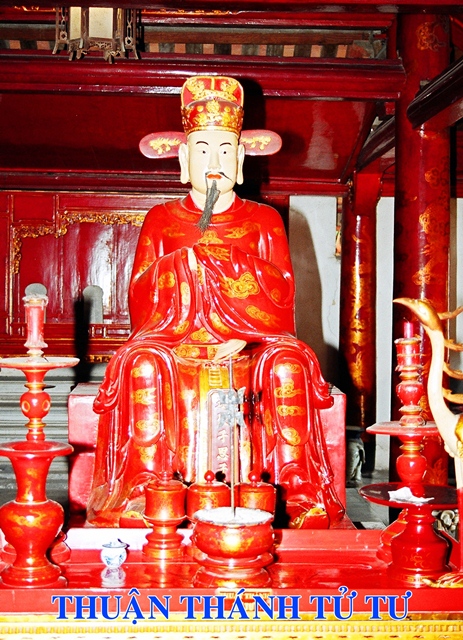
Kungkap (483-401 BC) alias Zisi, is a grandson of Confucius, student of Tanshan. Zisi is considered the real Confucius’ theory inheritor. Famous Trung Dung (golden mean) book compiled by Zisi represents the confucianism’s philosophy of life. The Zisi’s idea of Trung dung: “not to be biased or changed” play great role in history of Chinese ideology. Zisi had traveled preaching in many regions, spreading widely the quintessence of Confucianism, so he was rewarded title Thuat Thanh (narrated the idea of the Saint)
Tanshan (505-436 BC)
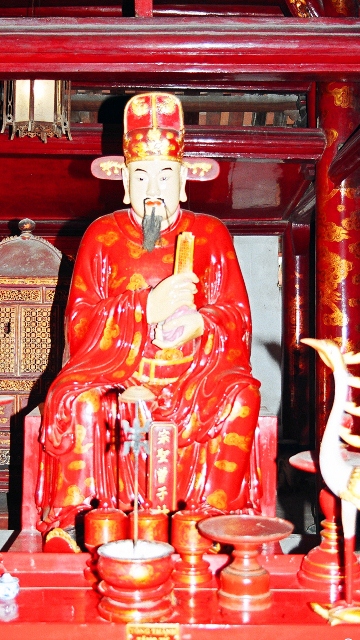
Tanshan (505-436 BC) alias Zizi, is also called as Tanzi, a native of Lu State. Tanshan deeply understood and know in detailed Confucius’ doctrine. He transferred the whole Confucius philosophy loyalty to Kungkap. He was well-known with his words examine himself three times everyday. Great study and Book of filial are two books of Tanshan, recorded Confucius words. Tanshan – Zisi preserved the essence of Confucius philosophy, so he was rewarded as Tong Thanh.
Yanhue (513-482 BC)
Yanhue (513-482 BC) alias Ziyen, is also called Yanyen, a native of Lu State. He was fond of learning, clever and had neither been angry with any one nor repeated mistakes. He was also famous for he was happy with the study even while the life was hard “with only a ball of cooked rice, a bottle of water, room in little alley”. He was considered by Confucius as a man “who restrained himself according codes of rites”, thus, Confucian scholars rewarded him as Phuc Thanh.
Confucius (551- 479 B.C)
Confucius, whose Chinese name was Qiuo or Zhong Ni, was born in Zouyi, Qufu district of Lu state, now a part of Shandong province, China.
Confucius was clever, kind and fond of studying. He became well known for his learning at the age of 30, and attracted disciples from near and far. When he was 54, he and his disciples started to travel from one state to another to learn and teach rites, music, archery, riding, calligraphy, and mathematics, and to persuade Emperors to implement his politics of governing by ethics. When 68 he returned to Lu State to write books and teach. During his lifetime he had nearly 3000 students. He died at the age of 73.
Confucius revised and edited the “ The Five Pre-Confucian Classics” (Book of Odes, Book of Annals, Book of Rites, Book of Spring and Autumn, Book of Change). “The Four Books” (The Great Study, The Golden Means, The Analects, Mencius), recording his teachings and doctrine compiled by his disciples. The Five Pre-Confucian Classics and The Four Books are Confucian Canons.
Confucianism (or Confucius’ doctrine) is, in brief, a theory on the ethical behavior of a gentleman: educating the self, organizing the family, governing the state, and ruling all nations.
Confucianism’s most important contribution lies in making feudal society orderly and lawful, by teaching people how to behave and educate themselves, and take responsibility for their family and society.
Confucius has been honored as the teacher of ten thousand generations.
GIỚI THIỆU CHUNG
Hiện nay tại khu di tích có hệ thống tượng phong phú cả về niên đại và chất liệu. Đó là bộ tượng Khổng Tử, Tứ Phối (Nhan Hồi, Tăng Sâm, Tử Tư, Mạnh Tử) đặt tại điện Đại Thành. Năm pho tượng của Khổng Tử và Tứ phối, được bày trang trọng theo vị thế của từng nhân vật: Khổng Tử ở chính giữa; lớp trong bên trái là Nhan Tử, bên phải là Tăng Tử; lớp ngoài bên trái là Tử Tư, bên phải là Mạnh Tử. Các pho tượng đặt ở tư thế ngồi, chân buông ngay ngắn về phía trước.
Tầng 1 nhà Hậu Đường khu Thái Học là nơi đặt tượng thờ thầy giáo Chu Văn An, một trong những vị Hiệu trưởng đầu tiên của Quốc Tử Giám. Tầng 2 nhà Hậu Đường là nơi đặt tượng thờ ba vị vua Lý Thánh Tông, Lý Nhân Tông và Lê Thánh Tông là những vị vua có công sáng lập Văn Miếu năm 1070, mở nguồn Nho học nước nhà. Cả bốn pho tượng đương đại đặt tại nhà Hậu Đường khu Thái Học đều được đúc bằng đồng, do các nghệ nhân đúc đồng làng Ngũ Xã, Hà Nội làm vào năm 2003.
